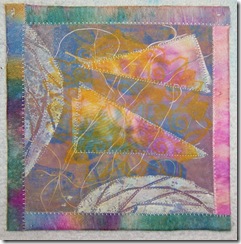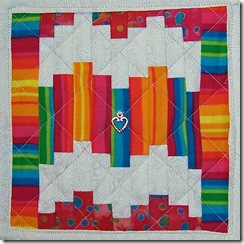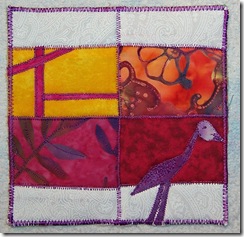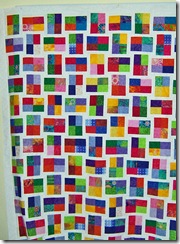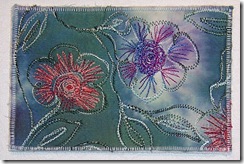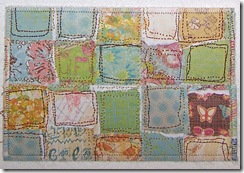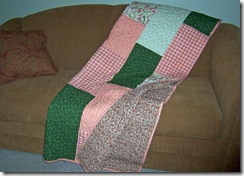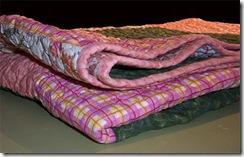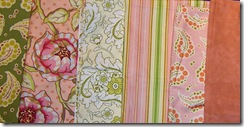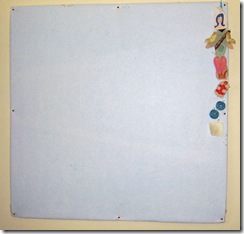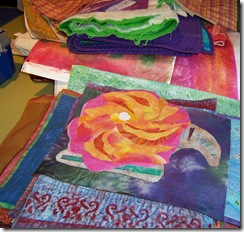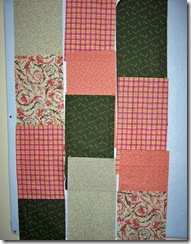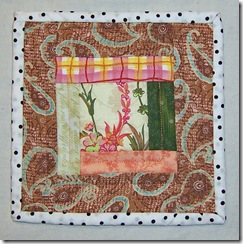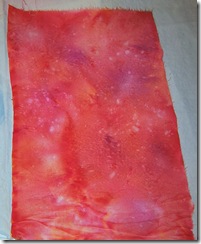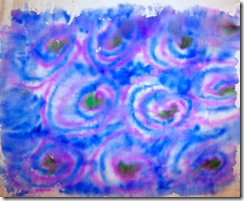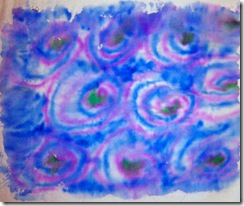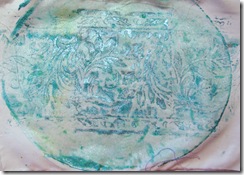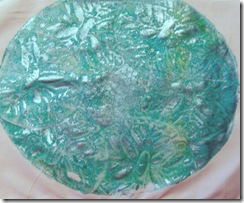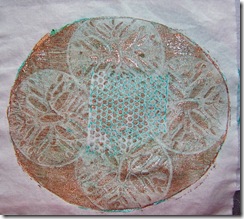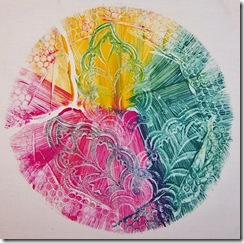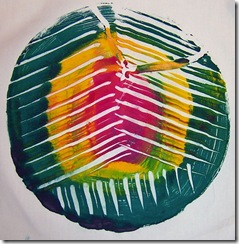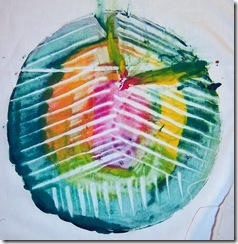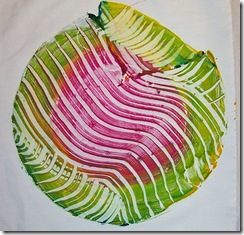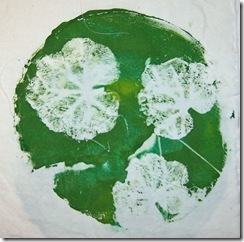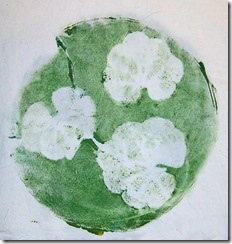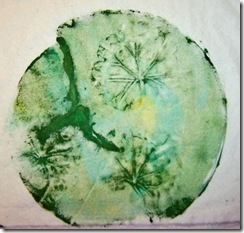I’m behind on posting my 6x6” weekly journal squares, so here are three:
Week 25, 8/9-8/15: This square was influenced by family discord that occurred this week. The layers, tangled threads, and connecting "broken" triangle pieces symbolize the depth and complexity of family relationships; the sheer overlay with a peaceful lotus screen print represents the way we smooth over all that complexity, turmoil, and rockiness.
I started with a base of painted and stamped (ugly) cotton fabric, then layered colored silk, silk threads, and screen printed sheers over it. The binding is fused silk:
Week 26, 8/16-8/22: This square was influenced by the pieced quilt I was working on (see this post for more info a picture of that quilt); I used some of the fabric strips left over from that quilt. I have been wanting to try foundation piecing, and then use that piece in an art quilt (symbolized by the heart charm). This square was “practice” for foundation piecing. It was also influenced by the never-ending heat wave here in Central Texas.
(Note: the binding looks more wonky in the picture than it actually is, though it’s still a little wonky. This is sort of a reverse binding: where I usually stitch it to front, turn it to the back, and hand-stitch, I started this one on the back and turned it to the front, then machine-stitched):
Week 27, 8/23-8/29: This square was influenced by, again, the pieced quilt I’ve been working on (I used a leftover block from that quilt), and by thinking about ways to use traditional piecing techniques in art quilts. It was also influenced by the record-breaking heat, and the skinny, scraggly birds that are constantly eating the dog’s food and drinking and bathing in their water:
As usual, I can now say I’m “almost” caught up with my weekly journal squares. I still have #17, which requires scanning a picture in, and #21, which I misplaced in its half-finished state, and only found today after going through some of the piles in my sewing room.

